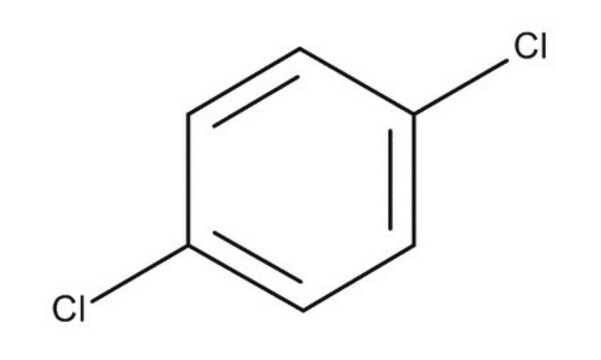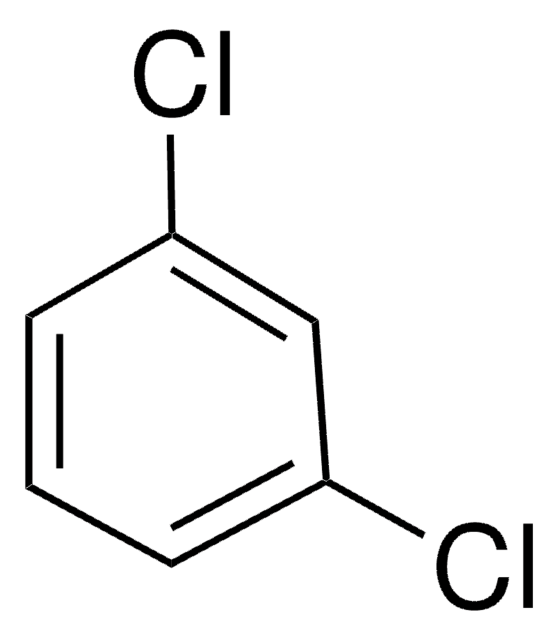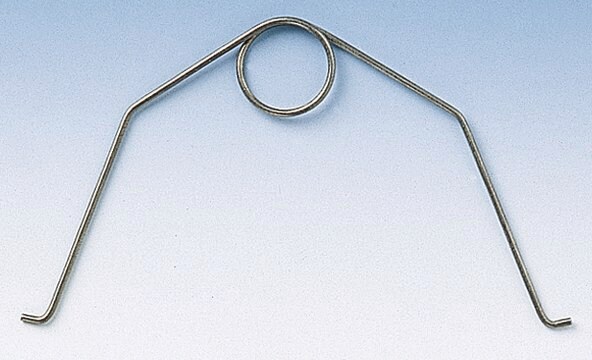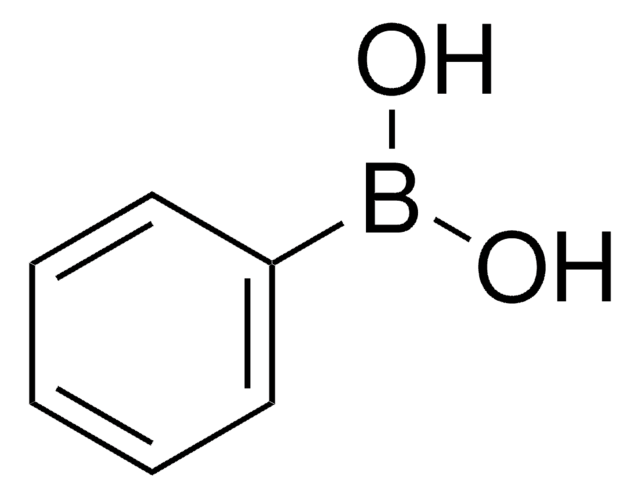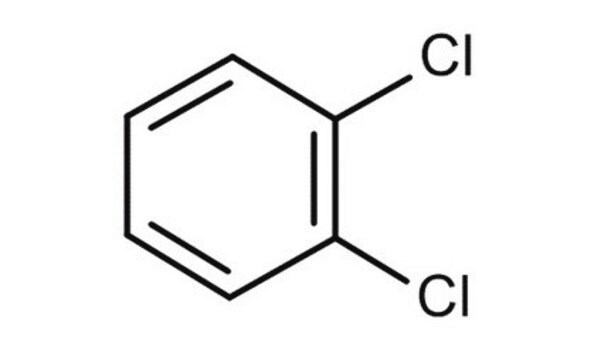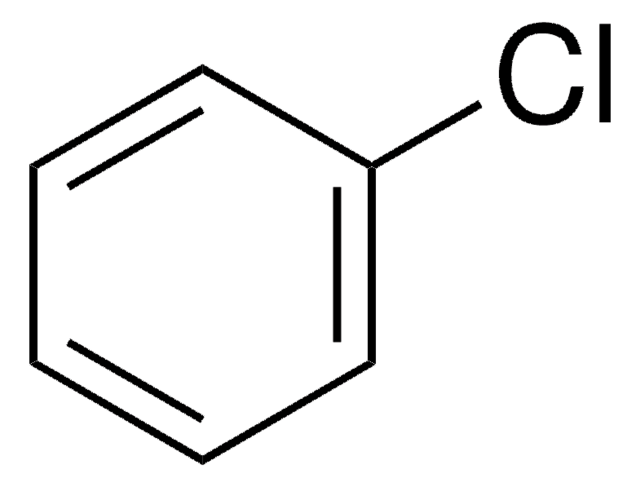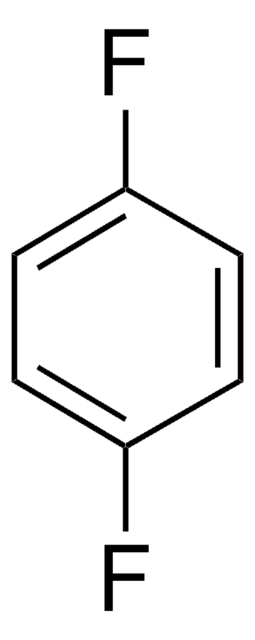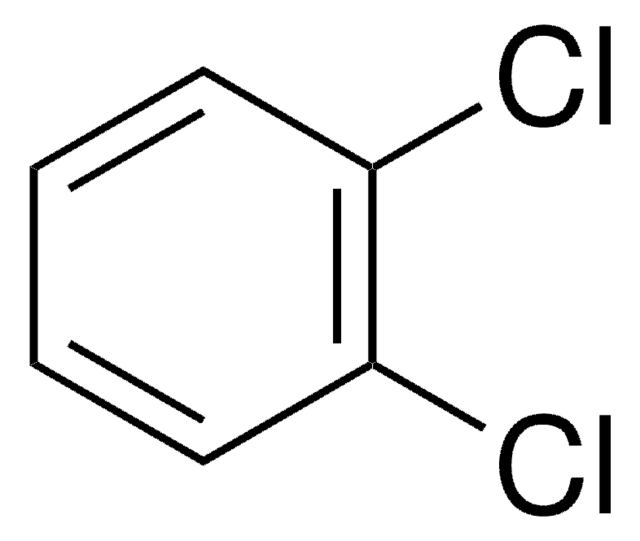Wichtige Dokumente
D56829
1,4-Dichlorbenzol
≥99%
Synonym(e):
1,4-Dichlorbenzol, Di-Chlorbenzenol, Dichlorbenzol, PDB, Paradichlorbenzol, p-Chlorphenylchlorid, p-Dichlorbenzol, para-Dichlorbenzol
About This Item
Empfohlene Produkte
Dampfdichte
5.07 (vs air)
Qualitätsniveau
Dampfdruck
1.03 mmHg ( 25 °C)
Assay
≥99%
Form
crystalline solid
bp
173 °C (lit.)
mp (Schmelzpunkt)
52-54 °C (lit.)
Dichte
1.241 g/mL at 25 °C (lit.)
SMILES String
Clc1ccc(Cl)cc1
InChI
1S/C6H4Cl2/c7-5-1-2-6(8)4-3-5/h1-4H
InChIKey
OCJBOOLMMGQPQU-UHFFFAOYSA-N
Angaben zum Gen
human ... CYP2A6(1548)
mouse ... Cyp2a5(13087)
Suchen Sie nach ähnlichen Produkten? Aufrufen Leitfaden zum Produktvergleich
Anwendung
- In the synthesis of nitro-aromatics via electrophilic nitration.
- To synthesize polyarylbenzenes through C-C cross coupling with arylboronic acids using imidazolium salt as a catalyst.
- In the Pd-catalyzed Mizoroki-Heck coupling reaction with alkenes.
Signalwort
Warning
H-Sätze
Gefahreneinstufungen
Aquatic Acute 1 - Aquatic Chronic 1 - Carc. 2 - Eye Irrit. 2
Lagerklassenschlüssel
11 - Combustible Solids
WGK
WGK 2
Flammpunkt (°F)
Not applicable
Flammpunkt (°C)
Not applicable
Persönliche Schutzausrüstung
Eyeshields, Faceshields, Gloves, type P3 (EN 143) respirator cartridges
Zulassungslistungen
Zulassungslistungen werden hauptsächlich für chemische Produkte erstellt. Für nicht-chemische Produkte können hier nur begrenzte Angaben gemacht werden. Kein Eintrag bedeutet, dass keine der Komponenten gelistet ist. Es liegt in der Verantwortung des Benutzers, die sichere und legale Verwendung des Produkts zu gewährleisten.
EU REACH Annex XVII (Restriction List)
Hier finden Sie alle aktuellen Versionen:
Besitzen Sie dieses Produkt bereits?
In der Dokumentenbibliothek finden Sie die Dokumentation zu den Produkten, die Sie kürzlich erworben haben.
Kunden haben sich ebenfalls angesehen
Unser Team von Wissenschaftlern verfügt über Erfahrung in allen Forschungsbereichen einschließlich Life Science, Materialwissenschaften, chemischer Synthese, Chromatographie, Analytik und vielen mehr..
Setzen Sie sich mit dem technischen Dienst in Verbindung.